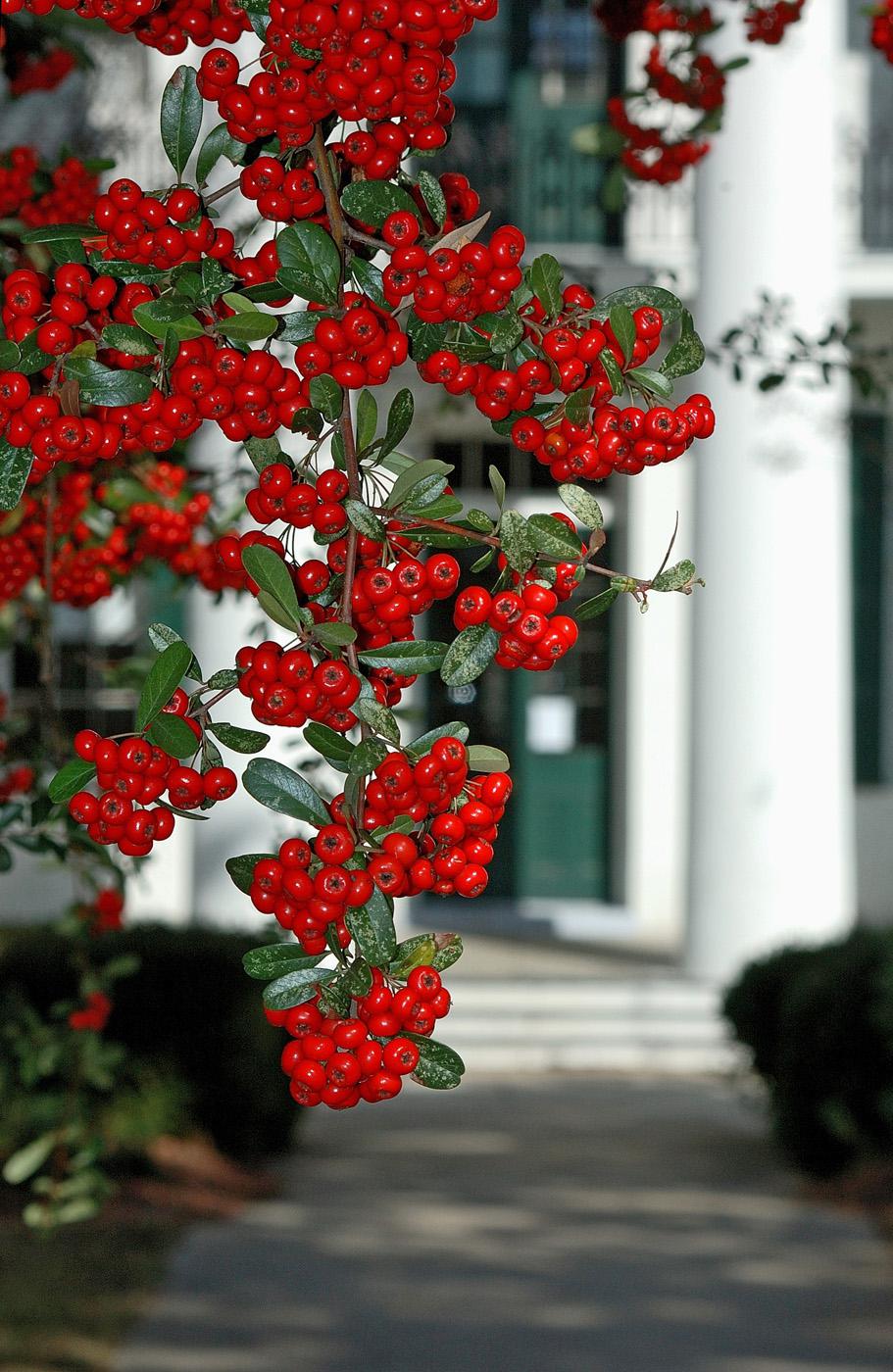Information Possibly Outdated
The information presented on this page was originally released on November 25, 2008. It may not be outdated, but please search our site for more current information. If you plan to quote or reference this information in a publication, please check with the Extension specialist or author before proceeding.
Pyracantha steals landscape shows
By Norman Winter
MSU Horticulturist
Central Mississippi Research & Extension Center
Winter is often cold and dreary, but the pyracantha, a member of the rose family, helps landscapes remain beautiful, interesting and a great source of food for cedar waxwings.
The pyracantha gets its name from the Greek word “pyr,” for fire, and “akanthos,” for thorn, hence the common name firethorn. This is very appropriate, as the pyracantha has sharp, painful thorns. I remember as a child reaching in to retrieve baseballs from the branches and coming out screaming.
The thorns do provide a valuable service because when grown by a window, the shrub offers protection from intruders.
Pyracantha is a versatile shrub with many landscape uses. It can be grown as a large 10-foot by 10-foot sprawling shrub or kept trimmed back to a 4- to 5- foot shrub. The courthouse near my office in Raymond has an old pyracantha growing next to a stately oak. The pyracantha drapes over it almost like Spanish moss.
The shrub is often trained as an espalier, where it lies flat against a wall with the berries held prominently for all to see. You may even see them trained as a living wreath. They bloom on old wood, so keep that in mind as you prune.
Pyracantha is native to Europe and western Asia and is a fast-growing shrub easily grown in sun to part shade. It blooms in the spring with clusters of white flowers followed by spectacular fruit, which ripens in the fall. Fruiting will not be as heavy in shade. It is hardy in zones 5 to 9.
Another great attribute is its soil adaptability. Pyracantha can thrive as long as the soil is well drained. I've seen many fine specimens grown in the alkaline soils in the west as well as in beds that were much more acidic.
When planting, dig your hole about two to three times as wide as the root ball but no deeper. Plant the pyracantha so the top of the root ball is at the same depth as the soil surface. Apply a good layer of mulch to conserve moisture and deter weed growth. The pyracantha need little if any fertilizer.
The dark, glossy leaves are attractive, and its red berries grow in dense clusters that show off from the fall through the spring, depending on the appetite of birds.
Look for Golden fruited varieties such as Golden Dome and Golden Charmer. Other good choices are Bright Orange selections such as Orange Charmer, Orange Glow and the red compact selection known as Red Elf.
Those who like to make floral arrangements will find that the pyracantha is attractive and has a long vase life.
Every winter landscape needs shrubs that produce berries for beauty and birds, and the pyracantha is among the best. They are producing berries now, and depending on where you live, there is a chance your garden center has some ready for planting this weekend. If they are not available, make yourself a note to get one next spring to be ready for berry production at your own home.








